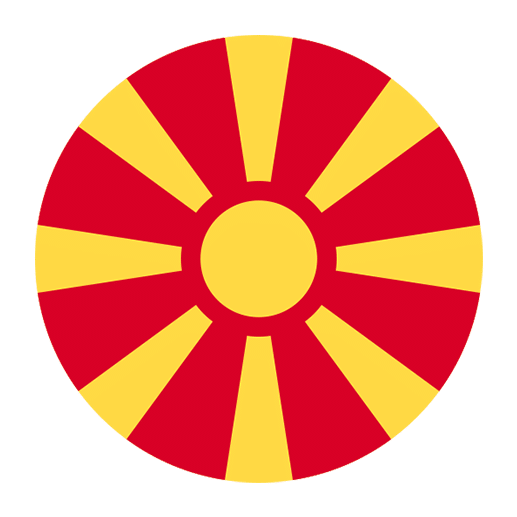Learning a new language can be a fulfilling and enriching experience, but it can also be challenging. One of the most effective ways to immerse yourself in a new language is to combine it with another aspect of culture that you enjoy. For many, culinary arts provide a perfect blend of sensory engagement and practical application. In this article, we will explore how learning Macedonian can be made easier and more enjoyable by delving into the country’s rich culinary traditions. By the end of this guide, you will not only have a better grasp of the Macedonian language but also a deeper appreciation for its cuisine.
The Intersection of Language and Culture
Learning a language is not just about memorizing vocabulary and grammar rules; it’s also about understanding the culture that shapes the language. Macedonian, a South Slavic language spoken primarily in North Macedonia, offers a unique linguistic and cultural experience. When you engage with Macedonian cuisine, you are not just learning how to cook; you are also learning about the culture, traditions, and history that influence the language.
Why Culinary Arts?
Food is a universal language that connects people from all walks of life. Culinary arts provide a natural context for language learning because they involve everyday vocabulary, imperative verbs, and a variety of cultural idioms. Cooking and eating are also social activities, giving you opportunities to practice conversational skills in a relaxed setting. Moreover, the sensory experiences of taste, smell, and touch can reinforce memory retention, making it easier to remember new words and phrases.
Basic Vocabulary: Ingredients and Kitchen Essentials
Before diving into recipes and cooking techniques, it’s essential to familiarize yourself with basic Macedonian vocabulary related to ingredients and kitchen tools. Here are some commonly used words and phrases:
Ingredients (Состојки – Sostoјki):
– Bread: Леб (Leb)
– Cheese: Сирење (Sirenje)
– Meat: Месо (Meso)
– Vegetables: Зеленчук (Zelenchuk)
– Salt: Сол (Sol)
– Pepper: Пипер (Piper)
– Olive oil: Маслиново масло (Maslinovo maslo)
– Garlic: Лук (Luk)
– Onion: Кромид (Kromid)
– Tomatoes: Домати (Domati)
Kitchen Tools (Кујнски алат – Kujnski alat):
– Knife: Нож (Nozh)
– Fork: Вилушка (Vilushka)
– Spoon: Лажица (Lazhica)
– Pan: Тава (Tava)
– Pot: Лонец (Lonec)
– Oven: Рерна (Rerna)
– Stove: Шпорет (Shporet)
– Cutting board: Даска за сечење (Daska za sechenje)
Common Phrases for Cooking
To follow a recipe or give cooking instructions, you’ll need to know some common phrases and verbs. Here are a few essential phrases that can come in handy:
Verbs (Глаголи – Glagoli):
– To cook: Готви (Gotvi)
– To bake: Пече (Peche)
– To fry: Пржи (Przhi)
– To boil: Вари (Vari)
– To chop: Сече (Seche)
– To mix: Меша (Mesha)
– To stir: Промешува (Promeshuva)
– To add: Додава (Dodava)
Common Cooking Phrases:
– Preheat the oven: Загреј ја рерната (Zagreј ja rernata)
– Add salt to taste: Додади сол по вкус (Dodadi sol po vkus)
– Chop the onions: Исечи го кромидот (Isechi go kromidot)
– Stir occasionally: Промешувај повремено (Promeshuvaj povremeno)
– Let it simmer: Нека крчка (Neka krchka)
Exploring Macedonian Recipes
Now that you have a foundational vocabulary, it’s time to put it into practice with some traditional Macedonian recipes. Each recipe will introduce you to new words and phrases, providing a practical context for language learning.
Tavče Gravče (Тавче Гравче)
Tavče Gravče is a classic Macedonian dish made from beans and is often considered the national dish of North Macedonia. Here’s how you can make it:
Ingredients:
– 500g white beans (500г бели грав – 500g beli grav)
– 1 onion (1 кромид – 1 kromid)
– 2 cloves of garlic (2 чешниња лук – 2 cheshniња luk)
– 2 tablespoons of red paprika (2 лажици црвен пипер – 2 lazici crven piper)
– 3 tablespoons of oil (3 лажици масло – 3 lazici maslo)
– Salt and pepper to taste (Сол и пипер по вкус – Sol i piper po vkus)
Instructions:
1. Soak the beans overnight. (Намокри го гравот преку ноќ – Namokri go gravot preku noќ)
2. Boil the beans until they are tender. (Вари го гравот додека не омекне – Vari go gravot dodека ne omekne)
3. In a pan, fry the chopped onion and garlic until golden. (Пржи го исечканиот кромид и лук додека не поруменат – Przhi go isečkaniot kromid i luk dodека ne porumenat)
4. Add the red paprika and stir well. (Додади црвен пипер и добро промешај – Dodadi crven piper i dobro promeshaj)
5. Combine the beans with the onion mixture and place in an ovenproof dish. (Комбинирај го гравот со мешавината од кромид и постави во сад за печење – Kombiniraj go gravot so meshavinata od kromid i postavi vo sad za pecheње)
6. Bake in a preheated oven at 180°C for about 30 minutes. (Печи во загреана рерна на 180°C околу 30 минути – Pechi vo zagreana rerna na 180°C okolu 30 minuti)
Ajvar (Ајвар)
Ajvar is a popular Macedonian spread made from red peppers and eggplants, often enjoyed as a side dish or a spread on bread.
Ingredients:
– 2 kg red bell peppers (2 кг црвени пиперки – 2 kg crveni piperki)
– 1 kg eggplants (1 кг модри патлиџани – 1 kg modri patliџani)
– 3 cloves of garlic (3 чешниња лук – 3 cheshniња luk)
– 100 ml oil (100 мл масло – 100 ml maslo)
– Salt to taste (Сол по вкус – Sol po vkus)
Instructions:
1. Roast the red peppers and eggplants until their skins are charred. (Печи ги црвените пиперки и модрите патлиџани додека не поруменат – Pechi gi crvenite piperki i modrite patliџani dodека ne porumenat)
2. Peel the skins off and remove the seeds. (Излупи ги кожите и отстрани ги семките – Izlupi gi kozhite i odstrani gi semkite)
3. Mash the roasted vegetables until smooth. (Згмечи ги печените зеленчуци додека не станат мазни – Zgmechi gi pechenite zelenchuci dodека ne stanat mazni)
4. In a large pan, heat the oil and add the mashed vegetables. (Во голема тава загреј го маслото и додади ги згмечените зеленчуци – Vo golema tava zagreј go masloto i dodadi gi zgmechenite zelenchuci)
5. Cook on low heat, stirring occasionally, for about 2 hours. (Готви на тивок оган, повремено промешувајќи, околу 2 часа – Gotvi na tivok ogan, povremeno promeshuvајќi, okolu 2 chasa)
6. Add salt to taste and let it cool before serving. (Додади сол по вкус и остави да се излади пред сервирање – Dodadi sol po vkus i ostavi da se izladi pred serviranje)
Language Learning Tips through Culinary Arts
1. Use Flashcards
Create flashcards for kitchen tools, ingredients, and common cooking verbs. Visual aids can help you remember new vocabulary more effectively. You can also label items in your kitchen with their Macedonian names to reinforce learning.
2. Watch Cooking Shows
Watching Macedonian cooking shows or YouTube channels can provide you with authentic language exposure. Pay attention to how chefs give instructions and describe ingredients. This can also help you improve your listening skills and pronunciation.
3. Cook with Native Speakers
If possible, cook with Macedonian speakers. This provides a real-life context for using the language and allows you to practice conversational skills. Ask questions, seek clarifications, and try to use as much Macedonian as possible during the process.
4. Keep a Culinary Journal
Maintain a journal where you document the recipes you’ve tried, along with new words and phrases you’ve learned. Writing in Macedonian will help reinforce your learning and improve your writing skills.
5. Join Online Communities
Join online forums or social media groups focused on Macedonian cuisine and language learning. Engaging with a community can provide support, motivation, and additional resources.
Conclusion
Learning Macedonian through culinary arts offers a unique and enjoyable way to immerse yourself in the language and culture. By combining language study with cooking, you can make the learning process more interactive and memorable. Whether you are a beginner or looking to improve your skills, exploring Macedonian recipes and culinary traditions can provide a rich, sensory experience that enhances your language learning journey. So, grab your apron, gather your ingredients, and start cooking your way to fluency!

